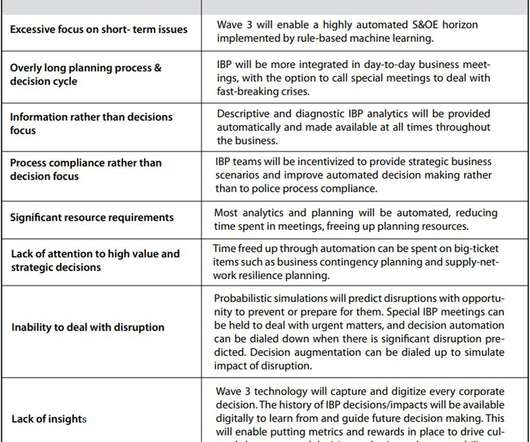Achieving enterprise-wide adoption of supply chain risk management
Resilinc
FEBRUARY 22, 2021
But to make their strongest case, SCRM advocates need to focus on one key metric: return on investment. It’s important to frame the program in strategic terms and to ensure that decision-makers understand the linkages between the tactical objectives of the SCRM and key metrics such as revenue, earnings, brand, and shareholder value.
















Let's personalize your content